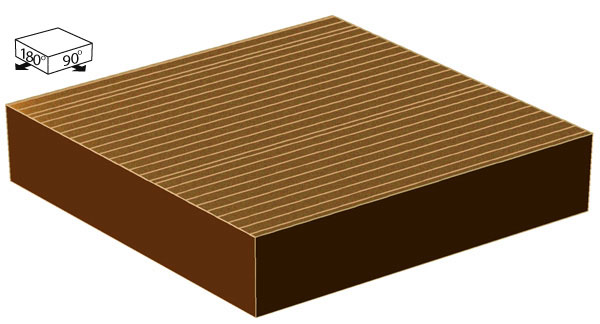Pacific Coastal and Marine Science Center
Bedform Sedimentology Site: “Bedforms and Cross-Bedding in Animation”


FIG. 8. Structure formed by two-dimensional bedforms migrating without deposition (climbing at an angle of 0 degrees).
RECOGNITION: This structure is bounded on its base by a plane that is tangent to the bedform troughs; the plane results from the passage of all bedform troughs along a single plane. In the pure form that is illustrated here, this is not a useful structure for interpreting bedform morphology or behavior; unless the bedforms become buried, the only feature that is preservable is the plane along which the bedforms migrated. If flow conditions change, however, the bedforms may climb at a positive angle, in which case the plane scoured by climb at an angle of 0 degrees becomes a useful indicator of the generalized depositional surface (Figs. 13 and 14). When this surface has been identified, the angle of climb and bedform spacing can be determined (Rubin and Hunter, 1982, 1984). Cross-bed and bounding-surface dips (not shown) are similar to those of the positively climbing bedforms in Figure 5, except that in this example the bounding surfaces are horizontal, and foresets have no upcurrent dips.
ORIGIN: The flow processes that produce this structure bedform migration with neither deposition nor erosion are probably extremely common in nature, but, as these processes are nondepositional, the structure is almost certainly under- represented in the geologic record. Approximations of this structure, however, can be preserved where bedforms climb at extremely small positive angles, thereby depositing thin laminae that nearly parallel the generalized depositional surface.